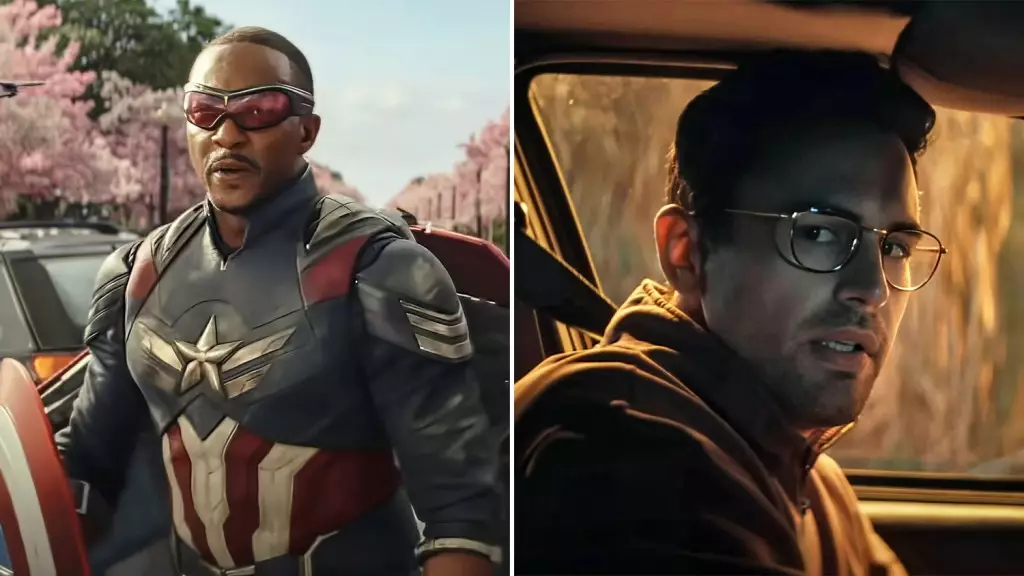The film industry is an ever-evolving landscape, where the fusion of innovative marketing strategies and compelling narratives often dictates success at the box office. Two recent releases, “Captain America: Brave New World” and Neon’s “The Monkey,” illustrate this dynamic effectively. As franchises and independent films vie for audience attention, it is critical to dissect their performances and the undercurrents influencing their journeys.
Marvel Studios has positioned “Captain America: Brave New World” as a significant contender in the superhero genre, capitalizing on the established fanfare surrounding its iconic franchise. Opening to an impressive $100 million over the four-day holiday weekend underscores a strong start, even with a lukewarm B- Cinemascore. This figure, while substantial, reflects a troubling trend where Marvel’s later releases have shown diminishing returns compared to earlier blockbusters. In this competitive market, holding on to box office momentum is crucial, especially following the 78% drop of “The Marvels” in its second weekend.
The film’s second weekend projections are estimated at over $30 million, a decent hold above the 70% drop suffered by “Ant-Man and the Wasp: Quantumania.” However, the echo of previous failures looms large, leading audiences and critics alike to question whether its success is sustainable. As Marvel Studios steps cautiously to navigate through the post-Endgame market, one wonders if they can recapture their former glory or if they will continue to endure the consequences of franchise fatigue.
Contrasting sharply with the superhero fad, Neon’s “The Monkey,” directed by Oz Perkins, hints at a revival of quality independent horror. The film, based on Stephen King’s universe, showcases an impressive campaign that seems to resonate with audiences, evidenced by its trailer racking up an astounding 109 million views—a remarkable feat for an indie horror picture. The marketing efforts highlight Neon’s adeptness at creating a buzz through unique tactics like themed premieres and eye-catching installations, such as the giant monkey statues positioned in theaters.
What makes “The Monkey” particularly standout is its focus on psychological horror intertwined with themes of childhood nostalgia and the disquieting nature of everyday objects. Producers James Wan, known for crafting iconic horror franchises, injects this film with a rich history of unsettling lore. Such a combination may captivate a demographic hungry for fresh narratives amid a sea of formulaic horror films, making the audience eager for a new experience, which “The Monkey” appears poised to deliver.
Both films are targeting similar audience demographics but through different lenses. “The Monkey” aims at the 17-34 age bracket, particularly appealing to Latino and Black moviegoers—an essential strategy in today’s diverse box office landscape. By showcasing dynamic narratives that reflect broader cultural experiences, the film leverages its potential to engage a wide array of viewers. This inclusiveness also syncs with changing audience expectations, as they increasingly seek representation within cinematic storytelling.
Conversely, “Captain America: Brave New World” leans on nostalgia and established global characters. However, any reliance on nostalgia must be balanced with fresh storytelling to satiate an audience that is becoming more discerning in their consumption of superhero content.
Despite the pressures of competition, recent box office statistics indicate a healthy domestic cinema environment, with a collective revenue of nearly $896 million recorded. This is a promising sign, suggesting that while battles among franchises and independent films intensify, audiences are still drawn to the theater experience. Yet, with franchises like Marvel facing growing skepticism and indie films projecting innovative narratives, it remains imperative for studios to rethink their approaches.
The success of “The Monkey” could signal a shift back to original storytelling, where independent films not only exist in the shadows of blockbusters but thrive alongside them. The future holds exciting prospects as the lines between mainstream and independent cinema continue to blur, enabling filmmakers to explore new creative horizons while appealing to a diverse audience base. As these trends unfold, the film industry will likely undergo significant transformations, reshaping how we consume and appreciate diverse cinematic experiences.

